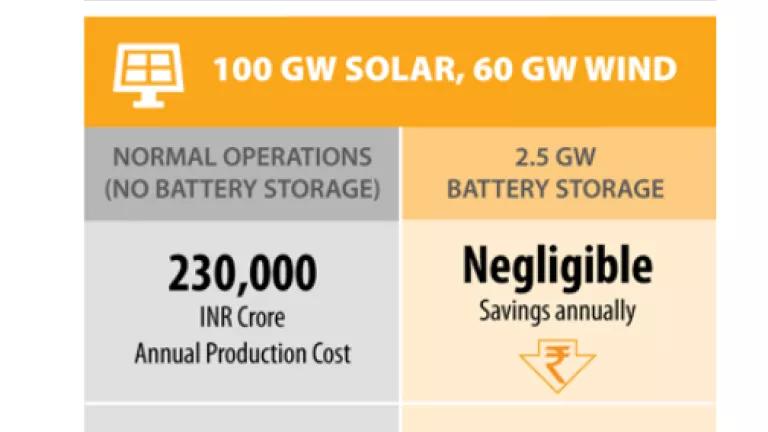Using More Renewable Energy by Managing Curtailment

As India seeks to integrate a growing share of renewables in its electricity grid, curtailment, defined as a “reduction in the output of a power generator from what it could otherwise produce given available resources (e.g., wind or sunlight), typically on an involuntary basis,” is a significant issue to resolve. Fortunately, the country has already taken steps towards recognizing and addressing curtailment and there are several other proven approaches that India can consider adopting.
There can be many reasons for curtailment, but most common is there being ‘not enough demand.’ For example, on a sunny day with moderate temperatures, while solar panels are generating at peak levels, the actual demand for electricity might be low. In this case, a grid operator could tell a solar power generator to cut down, or curtail, their output.
Now, in the absence of storage, this excess electricity is essentially wasted—directly hurting the bottom-line of the developers. Unlike coal and gas, which have capacity charges that go towards recovering capital costs, solar and wind developers need to be able to sell nearly all the electricity they produce to repay their investors and make money. Lenders are, understandably, concerned about the impact of curtailment on the cash flows of the developers and hence their ability to service loans. Curtailment, therefore, needs to be minimized to accelerate the availability of finance for renewable energy and scale up the market towards reaching its potential.
Approaches to managing curtailment
1. Forecasting generation with higher accuracy: Both solar and wind power are subject to variability in weather and other local conditions. Improving short-term generation forecasts will help grid operators to plan better. More accurate long-range estimation of generation can refine financial calculations for developers and give assurance to investors. Capturing electricity generation data from existing facilities is the basis of forecasting future production. In India, the Central Electricity Authority (CEA) produces daily and monthly generation reports for conventional power but not yet for renewables.
2. Making financial provisions: In places served primarily by vertically integrated utilities, power purchase agreements (PPAs) between the utility and wind developers increasingly contain financial provisions for curtailment contingencies. A certain level of curtailment is assumed, and the developers build that into the bid price. To increase accountability, PPAs can also include minimum guarantees for generation and off-take, with penalties for not meeting those thresholds. There is a need to develop financial solutions to mitigate the risk of under-performance as well as curtailment. Institutional mechanisms, such as green windows and a green fund, can be effective in bringing these innovative solutions to market.
3. Storing when excess, and selling when needed: Electricity storage can shift timing of supply to the grid. Battery storage, or other technological solutions, like pumped hydro, is essential for integrating higher levels of renewables while providing reliable electricity access. Studies have found strong correlations between the value of storage and renewable energy penetration.
4. Transferring electricity over long distances to places with higher demand: Weather and electricity demand patterns can be balanced better over a large geographic area. To improve transmission of renewable power over long distances, India is installing ultra-high voltage transmission lines as part of its green energy corridor scheme. Forecasting demand, both over time and at the local level, is equally important. Also vital is the ability of the distribution companies to buy electricity at spot prices through open markets.
5. Shifting, and reducing, power load to match supply: Some states in India provide incentives to industrial and agricultural consumers for shifting electric load to off-peak hours. A few cities have started similar “time-of-day” electricity prices for retail consumers as well. As cooling becomes a dominant source of electric demand in India, making air-conditioners more efficient and employing passive cooling strategies in buildings can further reduce peak demand load, which stresses the grid and increases system costs. Electric vehicles, which have some flexibility in charging, can also provide an opportunity for smoothening the electricity demand curve and reducing grid stress.
6. Improving grid flexibility: Finally, overall upgrades to the grid are essential in improving efficiencies, response times and connectivity to diverse power generation sources. Distributed generation, such as through rooftop solar, enables consumption at the point of generation – which reduces transmission losses. However, the grid also needs to have the technology to reliable absorb excess generation from rooftop solar.
As renewable energy grows rapidly in India—the installed solar and wind capacity has doubled over the last 3 years—there is a need for efficient grid integration to ensure that the clean power generated is not wasted due to curtailment. The time is right for the central and state governments to address this issue and assure investors that renewable energy has a bright future in the country.




